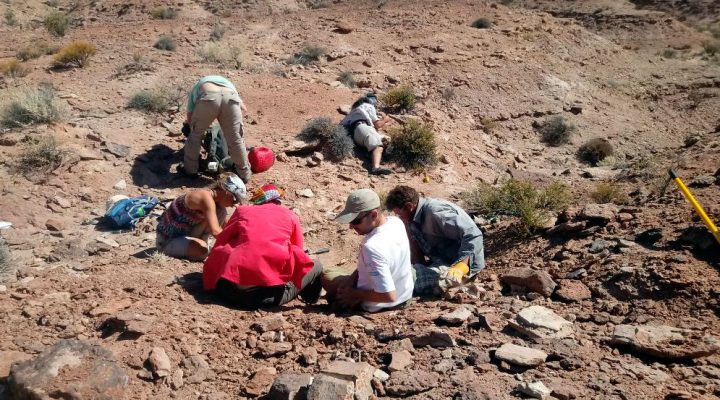EXACT AND NATURAL SCIENCES
Scientists find fossil remains of a new species of freshwater turtle
The discovery is unusual due to the state of conservation of the pieces.
A study led by CONICET scientists identified the fossil remains of a new species of freshwater turtle that inhabited the Earth 90 million years ago. The discovery was published in the Journal of Systematic Palaeontology.
The find was carried out in “El Cañadón de las Tortugas” located in “La Buitrera,” Rio Negro. This is the first time a specimen of this reptile is found with its head since paleontological studies have been carried out in the site, more than twenty years ago.
It was vital the comparison between the cranial remains found with those of current turtles and fossils in order to determine that there was a new species that has not been discovered so far. “The main features that define this new species are those linked to the skull, such as the presence of a large retropterygoid foramen and a highly developed area of muscle adherence to the baisphenoid. Both morphologies have not been observed so far in any current or fossil turtle skull,” explains Ignacio Maniel. He is a CONICET assistant researcher at the Instituto de Evolución, Ecología Histórica y Ambiente (IDEVEA, CONICET – UTN FRSR) and one of the scientists who led the group with Marcelo de la Fuente and Sebastián Apesteguia, also researcher of the Council.
The new species was called buitreraensis in reference to an already known genus of warm turtles that inhabited Patagonia during the Cretaceous and to the place where the fossils were found.
In addition to the almost complete skull and excellent state of conservation, the researchers found remains of the cervical vertebrae, carapace and the appendicular skeleton. The age of the discovery was calculated from radiometric dating made on zircons of a volcanic tuff that emerges in the discovery site.
“The turtles were found in river deposits interspersed with dunes, where invertebrate cave fillings are preserved. As regards the fossil remains, we managed to observe that the morphological characteristics present in Prochelidella buitreraensis correspond to those identified in current turtles that live in freshwater habitats,” the scientist describes.
The researchers will continue their work in the site to complement the holotype and evaluate the morphological variability of this new species. “The studies in this area have been conducted for twenty years thanks to the support of national organizations such as CONICET, the ‘Agency’ and the ‘Secretariat of Culture’ of Rio Negro, and some international organizations such as National Geographic and Jurassic Foundation, among others, which have provided us with subsidies and permissions to develop this activity. There is no doubt that this place has given a lot of information about the fauna of the past and we have much ahead to discover,” concludes Maniel.
By Leonardo Fernández
References
“Cranial and postcranial remains of a new species of Prochelidella (Testudines: Pleurodira: Chelidae) from ‘La Buitrera’ (Cenomanian of Patagonia, Argentina), with comments on the monophyly of this extinct chelid genus from southern Gondwana”, Journal of Systematic Palaeontology, DOI: 10.1080/14772019.2020.1721579
About the study
Ignacio Maniel – Assistant reseracher IDEVEA, CONICET – UTN FRSR
Marcelo de la Fuente – Principal researcher IDEVEA, CONICET – UTN FRSR
Sebastián Apesteguía – Independent researcher, Fundación de Historia Natural “Félix de Azara”
Joaquín Pérez-Mayoral – Facultad de Ciencias Naturales y Museo, UNLP
María Lidia Sánchez – UNRC
Gonzalo Veiga – Principal researcher of CONICET at the Centro de Investigaciones Geológicas, UNLP
Ian Smales – Jenner Street, Birregura, Victoria, Australia
